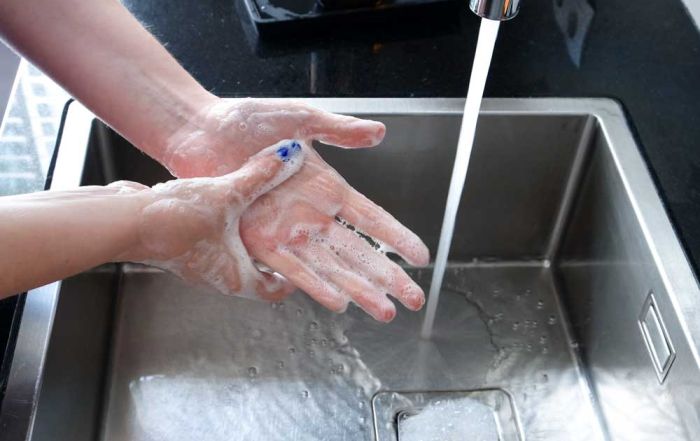Salmonella and Listeria monocytogenes: Serious Threats to the Safety of Food
Earlier in the month, I mentioned the top microbial enemies we all face in foodservice operations, E. coli, Campylobacter, Salmonella, and Listeria monocytogenes. While we discussed E. coli and Campylobacter, we did not get around to discussing Salmonella or Listeria monocytogenes.
Food is the source for most Salmonella outbreaks in the United States, which causes about 1.35 million infections each year. The illness that results from Salmonella is called salmonellosis, and it can be serious. Most individuals who contract salmonellosis will recover within a week, yet, it accounts for almost one-third of all food-related deaths in the United States. Salmonellosis infections result in 26,500 hospitalizations and 420 deaths each year.
It is hard to trace outbreaks to any one source. Recent outbreaks have been linked to cashew brie (yes, there is such a thing as cashew brie, I thought it was a typo, so I looked it up!), ground turkey, mushrooms, peaches, and onions, which shows the wide variety of products that could be impacted by Salmonella.
Listeria monocytogenes is the bacterium that causes listeriosis, which sickens an estimated 1,600 people each year, resulting in approximately 260 deaths yearly in the United States. Listeriosis is more likely to impact pregnant women, newborns, older adults, and those with weakened immune systems.
Most individuals who contract salmonellosis will recover within a week, yet, it accounts for almost a third of all food-related deaths in the United States.
Sources of listeriosis outbreaks over the last few years have been related to deli meats and cheeses (3 of the 5 reported outbreaks from known sources), mushrooms (1 of the 5 reported outbreaks), and hard-boiled eggs (1 of the 5 reported outbreaks). The implication of deli meats and cheeses in listeriosis outbreaks is the reason women are encouraged to forgo consuming these items during pregnancy.
To mitigate the likelihood of a salmonellosis or a listeriosis infection, wash your hands and thoroughly wash and sanitize cutting boards and other food contact surfaces, especially those that have come into contact with raw meat or poultry. Be sure to thoroughly wash fresh fruits and vegetables before consuming, cook foods to the proper temperatures, and refrigerate leftovers and other perishable items as quickly as possible. Last, but not least, refrain from eating or drinking foods containing raw eggs or unpasteurized milk. And yes, this does include raw cookie dough that contains raw eggs.
If you have more questions about the microbiology of food safety, be sure to join us in just a few days for our next SafeBites Webinar! Dr. Sara Gragg, an associate professor of animal sciences and industry at Kansas State University will present “The Science Behind the Temperature Danger Zone and Limiting Bacterial Growth.” Be sure to sign-up and join us. Risk Nothing.
READ MORE POSTS
30 Years Later: The Foodborne Illness Outbreak that Changed Food Safety
In January, we hit a major anniversary. One I am betting snuck by many of you – including me! January marked 30 years since the deadly 1993 E. coli O157:H7 outbreak at Jack in the Box restaurants on the west coast. The anniversary wasn’t on any of the major news networks that I recall. It did make it into a few newspapers, at least one or two of the newspapers that are left. It wasn’t until late-February that I realized it.
Does Temperature Really Matter when Washing your Hands?
In January, I reviewed the changes to the 2022 Food Code in my blog (check out Part I and Part II), and one change to the food code that I had mentioned, but didn’t discuss in-depth, was the change that lowered the water temperature a hand sink was required to produce to 85°F, as noted in Section 2-202.12 of the code. This requirement has been in place since the publishing of the 2001 Food Code, which required a water temperature of 100°F. Prior to this, 110°F was required (see the 1999 Food Code). So why the change and does water temperature when washing your hands really matter?
Hand sinks: Often Taken for Granted, but an Essential Part to Effective Hand Hygiene
Late in January, I received a question about hand sinks in a foodservice operation. The question pertained to school staff (teachers and aides) who were using a hand washing sink in the school kitchen. The question came as a matter of who was allowed access to the kitchen to use the sink, but the question itself caused me to go down a rabbit hole of requirements for hand washing sinks in foodservice operations.
Hot off the Press: The 2022 Model Food Code has been Released! Part Two.
Earlier in the month, we started a discussion about the changes to the 2022 Food Code. If you missed that post, late in December 2022, the Food and Drug Administration released the 2022 Food Code and I wanted to highlight a few of the changes that have been made to the code.










